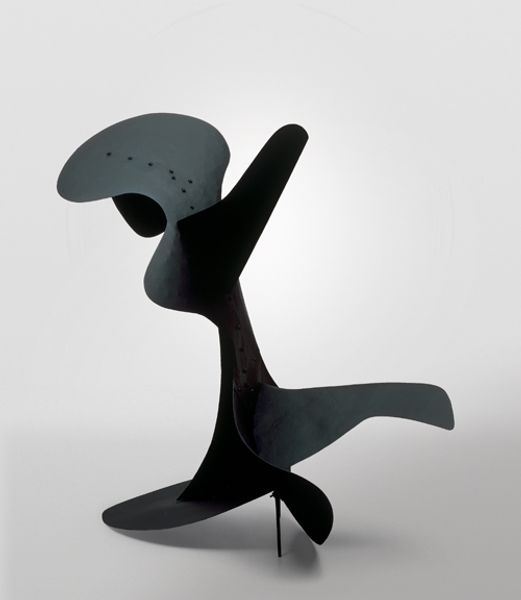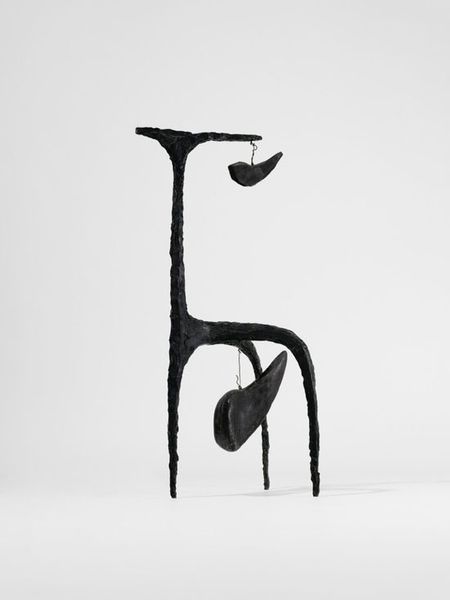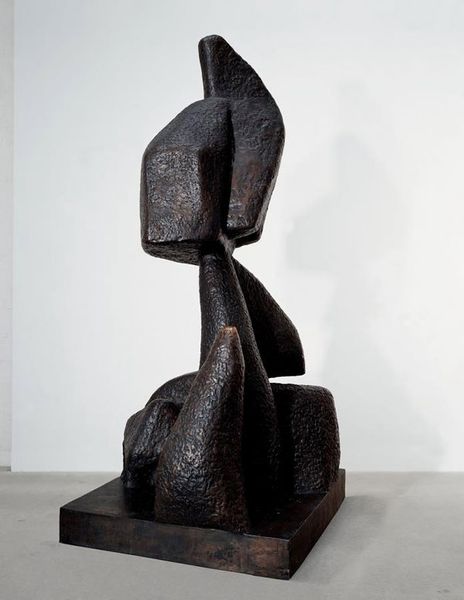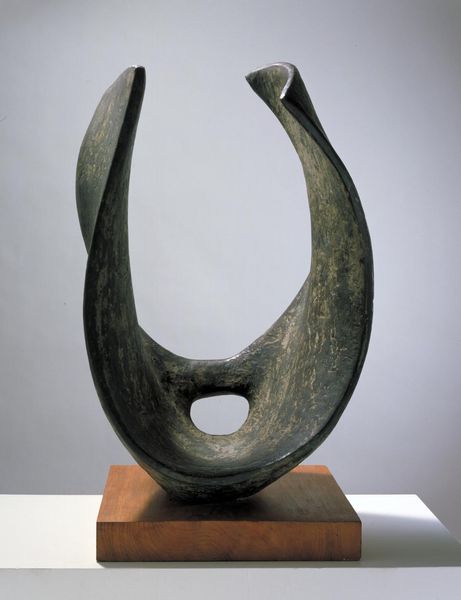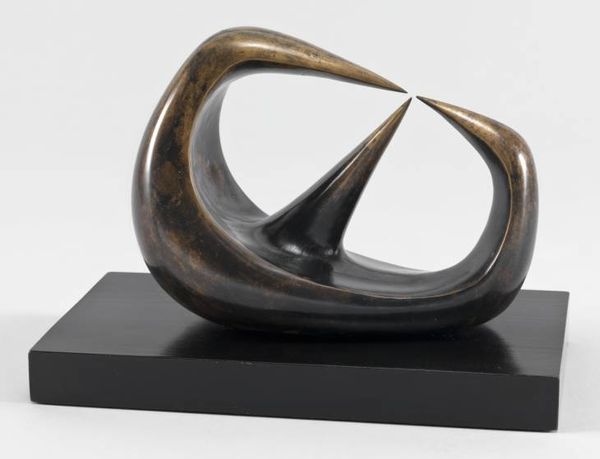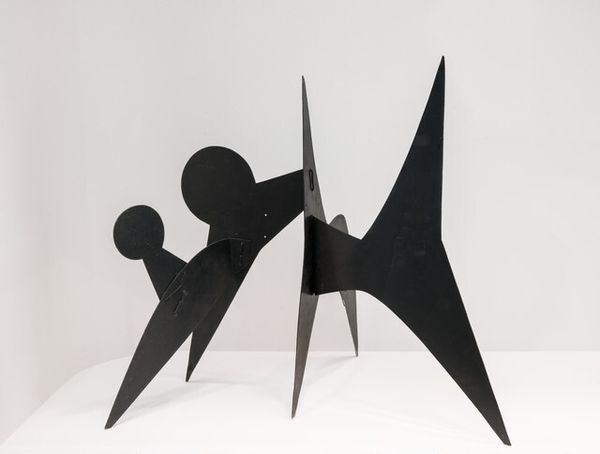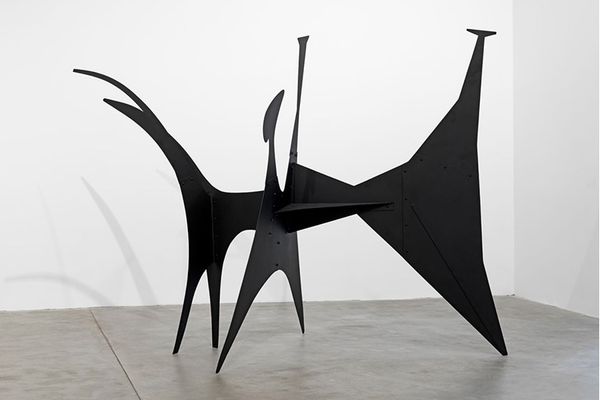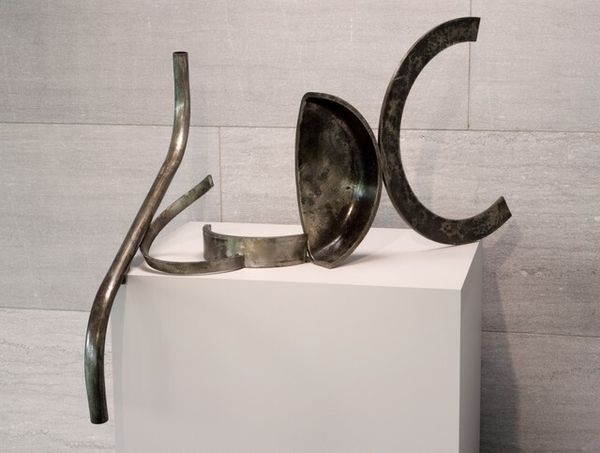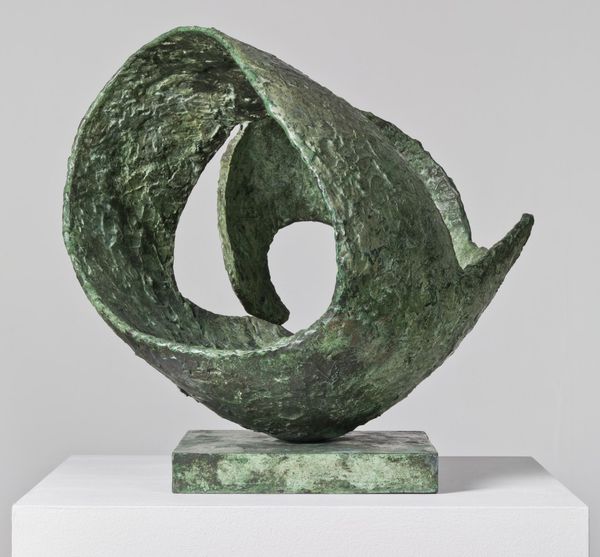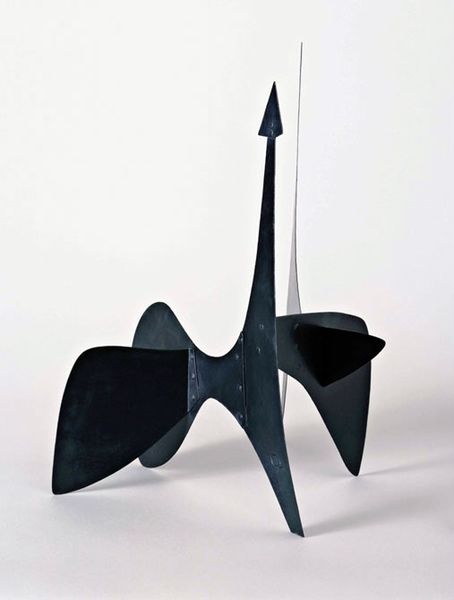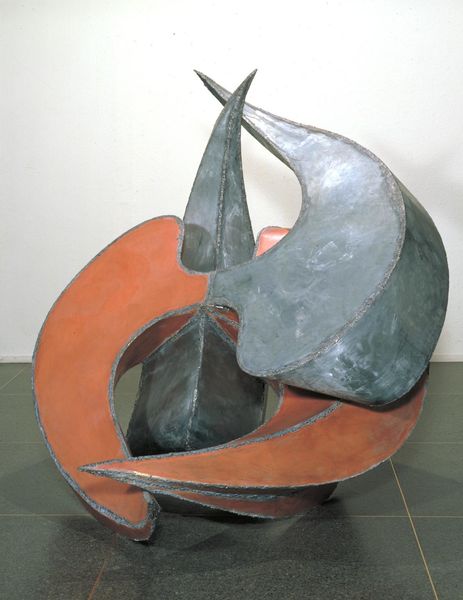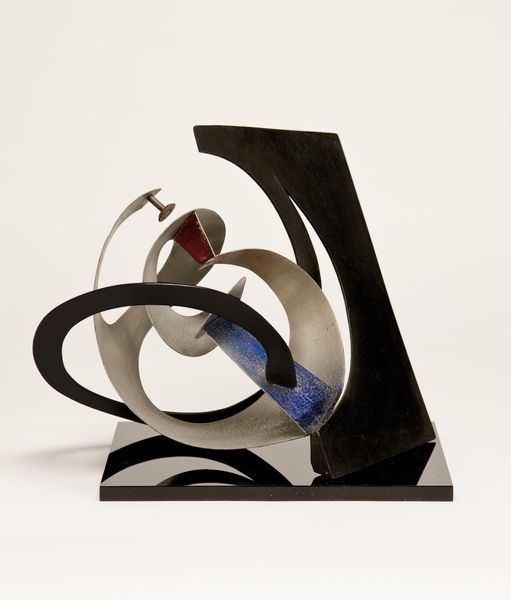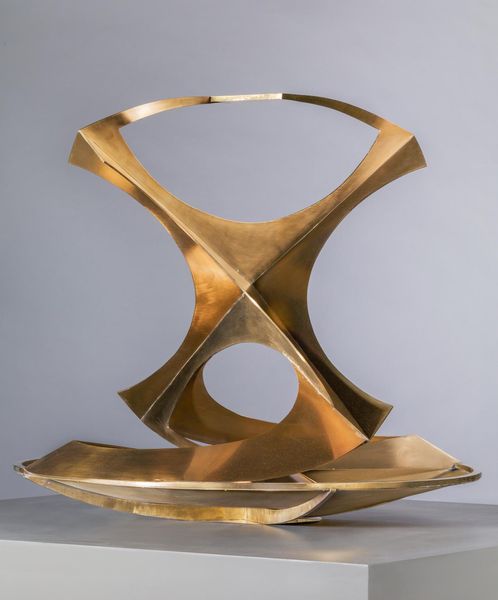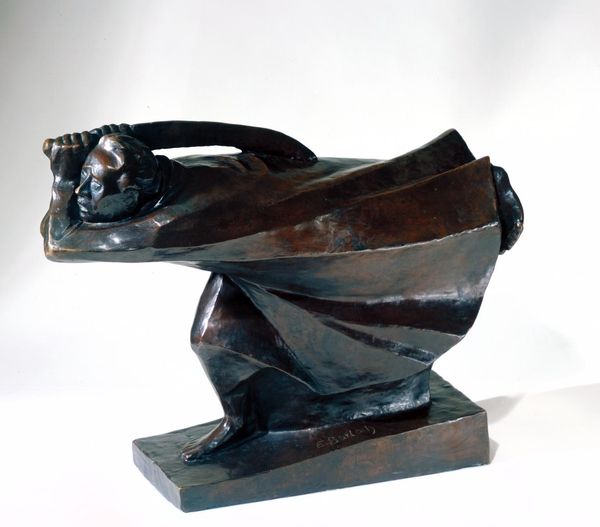
Dimensions: object: 425 x 340 x 242 mm
Copyright: © The estate of Bernard Meadows | CC-BY-NC-ND 4.0 DEED, Photo: Tate
Editor: This is Bernard Meadows’ sculpture *Black Crab*, housed in the Tate Collections. The bronze material gives it a really strong presence, but I’m curious – how do you interpret this work formally? Curator: Focus on the interplay between positive and negative space. The sculpture's form is dictated by these voids, creating a visual tension. Note how the polished surfaces catch light, defining contours and suggesting movement. Editor: So, it’s less about the crab itself and more about how it’s shaped? Curator: Precisely. Consider also how the rough texture contrasts with the smooth areas, lending a tactile quality. These elements, juxtaposed, construct the artwork’s formal language. What do you make of the composition? Editor: That’s really insightful, seeing it in terms of contrasting textures and shapes has opened my eyes. Thanks.
Comments
Join the conversation
Join millions of artists and users on Artera today and experience the ultimate creative platform.
tate 6 months ago
⋮
Meadows became interested in the behaviour of crabs while stationed on the Cocos Islands in the South Indian Ocean during the Second World War. This sculpture, he explained, represented 'the distillation or essence of crabness'. British sculpture in the early 1950s often adopted the forms of aggressive or wounded animals, insects or birds. The critic Herbert Read associated such figures with a mood of post-war anxiety. He used a quotation from TS Eliot to characterise them as 'images of ragged claws scuttling across the floors of silent seas...' Gallery label, February 2010
